7 Types of Affiliate Marketing (And Which One Actually Pays Beginners Fast)
Confused about the types of affiliate marketing? Discover 7 proven models and find out which one helps beginners earn their first commission fast.
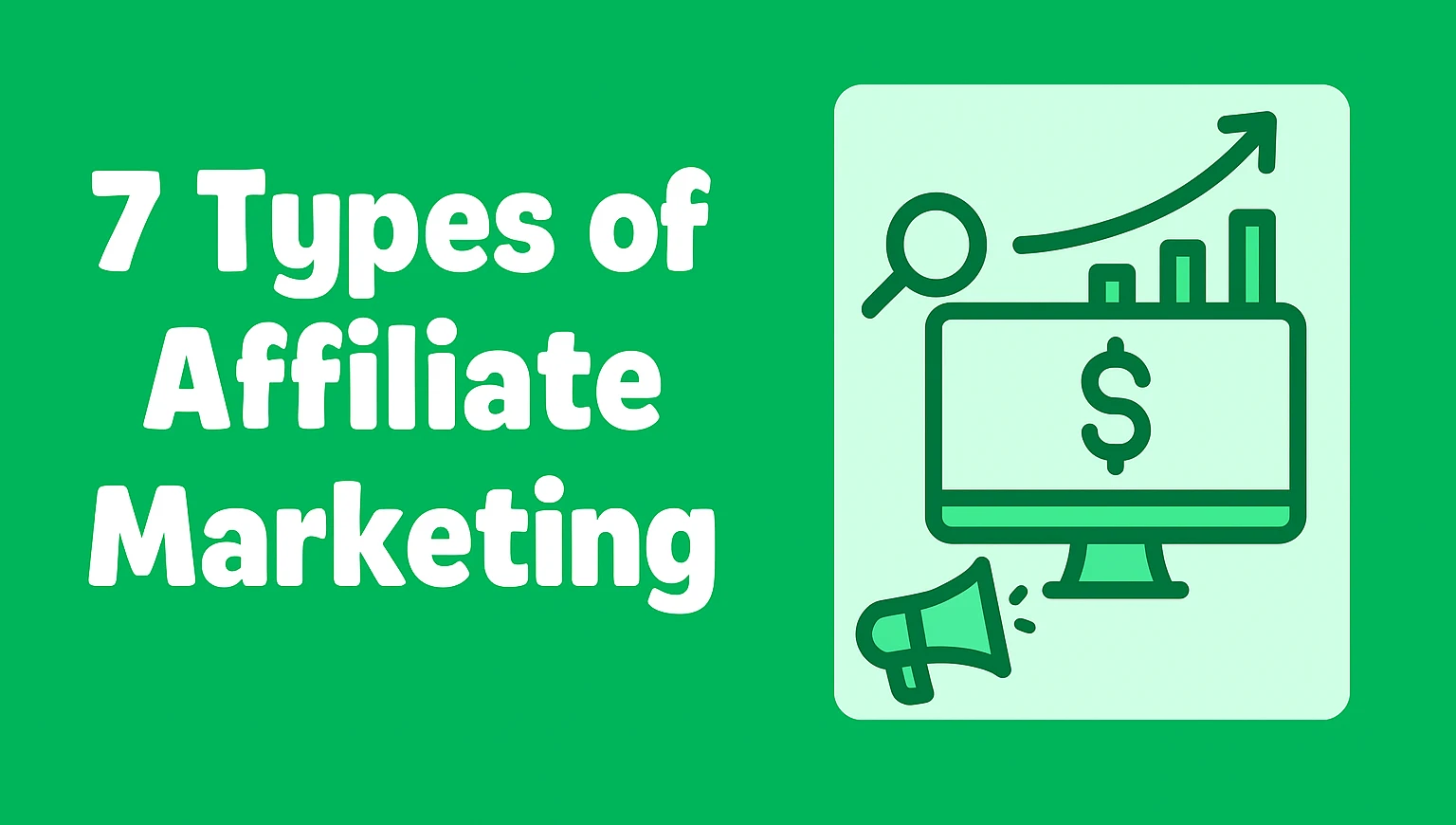
Affiliate marketing is a way to earn money by promoting other people’s products and getting paid when someone buys through your link.
Sounds simple, right?
But once you start digging, you’ll find out there isn’t just one way to do it.
There are different types of affiliate marketing—and that’s where many beginners hit a wall. You sign up for programs, build a few links, maybe even write a blog post or two, and then…nothing. No clicks. No sales. Just silence.
That’s not because affiliate marketing doesn’t work. It’s usually because you picked the wrong model for your situation.
I’ve been there. I remember jumping into CPA offers with paid ads thinking it’d be fast money. Burned a small budget and got nothing back. It took me a while to realize I was trying to run before learning how to walk.
This post breaks it down for you. I’ll walk you through seven main types of affiliate marketing and point out which one actually helps beginners earn faster. No gatekeeping. Just the stuff I wish someone had told me upfront.
Key Takeaways
- There are 7 core types of affiliate marketing, each with a different approach.
- Unattached affiliate marketing works fast but needs ad skills.
- Related affiliate marketing fits content creators and niche sites.
- Involved affiliate marketing builds strong trust and long-term income.
- Influencer-based models help beginners earn faster with less setup.
- Review-style content ranks well but takes time to build.
- Funnel-based models grow slowly but are powerful over time.
What Are the Main Types of Affiliate Marketing?
When we talk about the types of affiliate marketing, we’re not just labeling random categories. We’re talking about how you promote offers, how much effort it takes, and how the money actually comes in.
Each type is built around a different model. Some rely on content, others on traffic volume, trust, or even automation.
This isn’t theory. You won’t see vague ideas or textbook definitions here. These are the real earning paths people are using today to make affiliate income—some as side hustles, others as full-time businesses.
Some methods are quick to get going but hard to scale. Others take longer but build solid, steady income. The key is knowing what each type demands and what it delivers. That’s what we’re diving into next.
The 7 Types of Affiliate Marketing
There’s no one-size-fits-all in affiliate marketing. Each type has its own strengths, risks, and learning curve. Some are better suited for creators. Others work best if you’ve got ad skills or love data.
The goal here is simple: understand how each model works, what it takes to succeed, and whether it’s something you can realistically start with—based on where you are right now.
Let’s start with the most hands-off one.
1. Unattached Affiliate Marketing
This model doesn’t need a brand, a blog, or even an audience. You just run ads—usually PPC (pay-per-click) to drive traffic straight to your affiliate links. Think Google Ads, Facebook Ads, or native ad platforms. You act more like a traffic broker than a content creator.
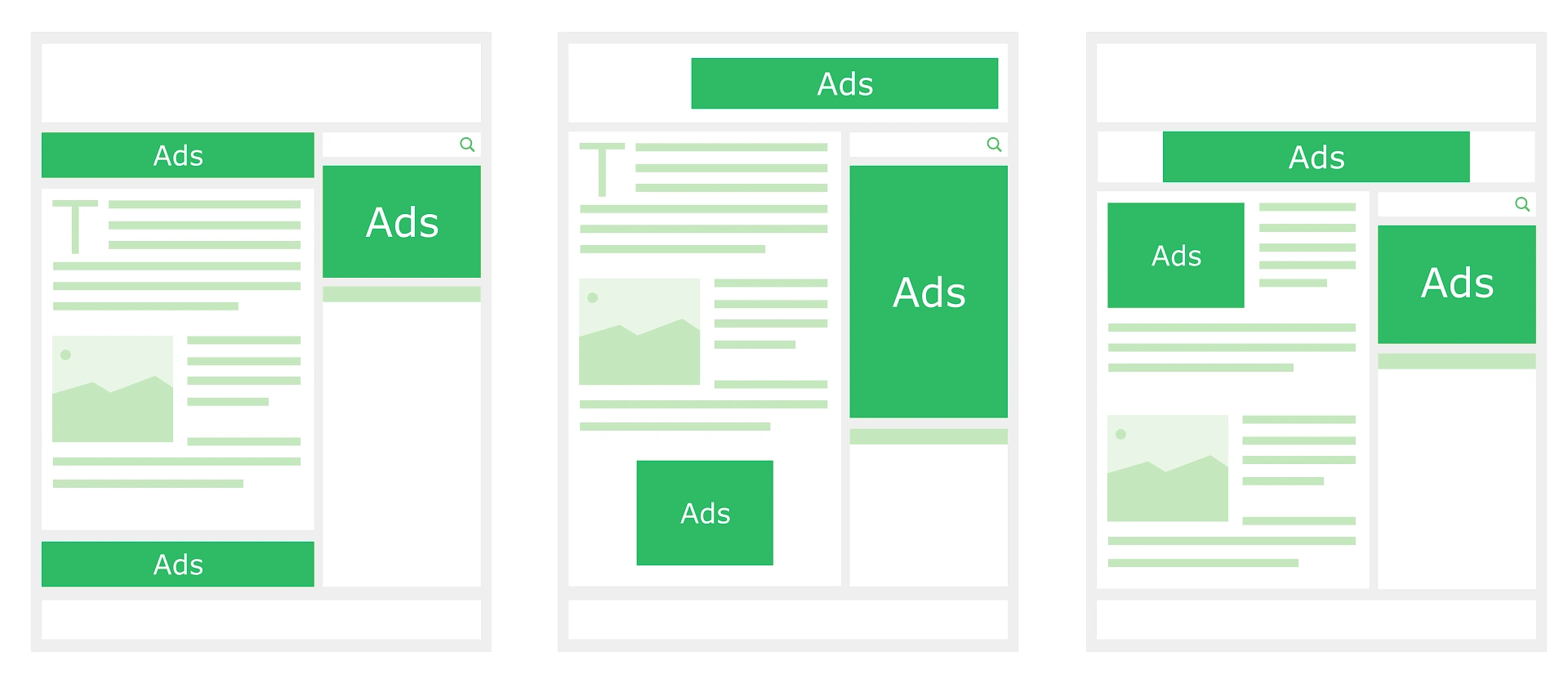
Pat Flynn from Smart Passive Income often uses this model as a counterexample when teaching affiliate marketing. He talks about how unattached affiliates can make money without building trust but also why this rarely leads to long-term success. His approach leans more on trust and transparency,which this model lacks.
This type of affiliate marketing is good for people who are already skilled with paid ads and enjoy testing funnels or split-testing offers.
And it can be really hard if you don’t know how to manage ad budgets, test landing pages, or interpret conversion data, you’ll probably burn cash fast. It’s a cold game—zero relationship with the audience, which means no brand equity to fall back on.
2. Related Affiliate Marketing
This model makes sense if you’ve already picked a niche and started creating content around it—like blog posts, YouTube videos, or even social threads. Instead of just tossing links everywhere, you promote products that actually fit what you’re already talking about.
Say you run a YouTube channel about personal finance. Recommending a budgeting app or a credit-building tool fits right into your content. It doesn’t feel forced. Your audience came for advice, and you’re offering a helpful tool to go with it.
For example, Michelle Schroeder-Gardner from Making Sense of Cents writes about personal finance and side hustles.
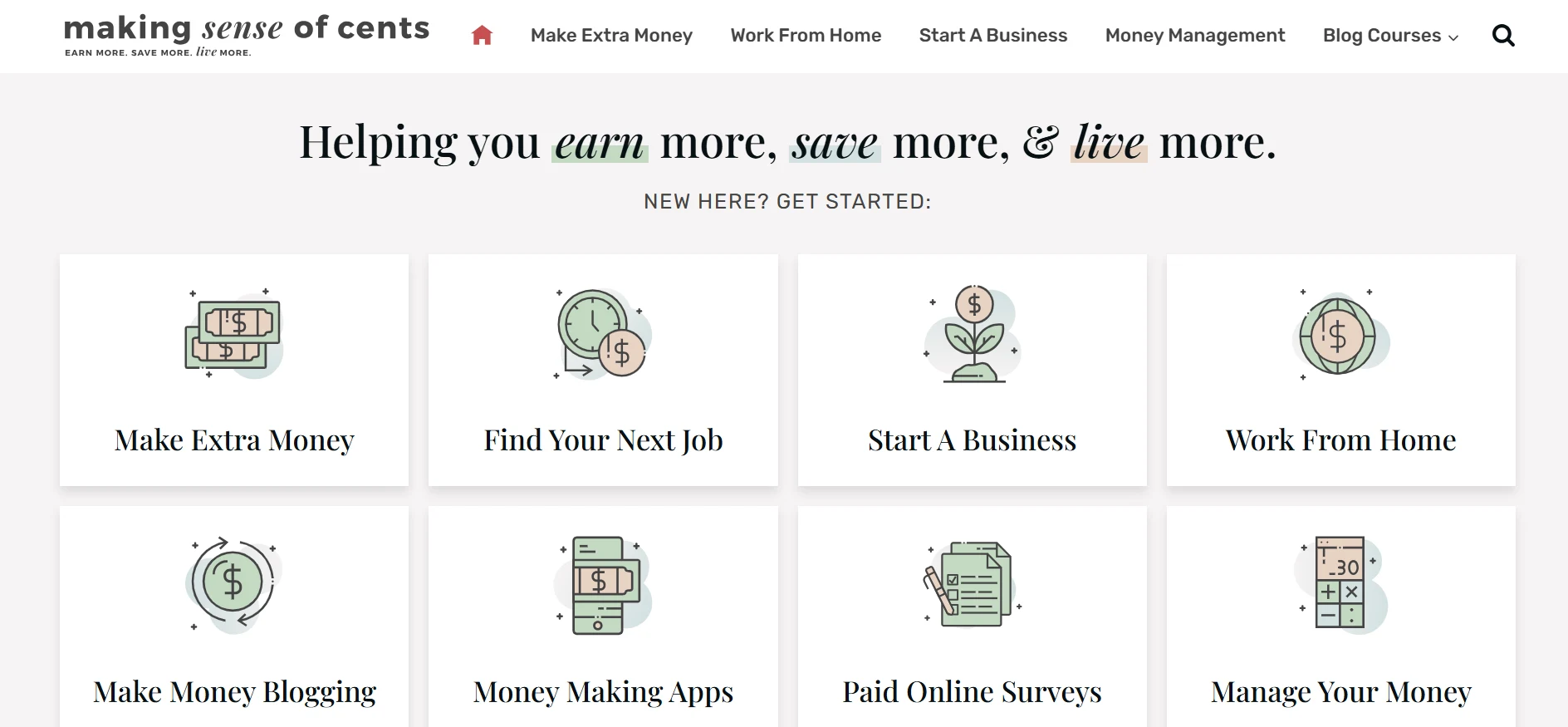
One of her top-performing affiliate posts (with over 50k social shares) is about how to start a blog. That post alone promotes hosting services like Bluehost—and she earns steady commissions from it because it directly fits her niche and helps her audience take action.

The real advantage here is trust. Even if you’re not a heavy user of every product, you’re building relationships through content. People are more likely to click and buy when your recommendations line up with the problems they’re trying to solve.
This model works especially well for bloggers, YouTubers, and anyone who’s building something niche-specific. It’s slower than paid ads, sure—but way more sustainable.
Over time, your content keeps working for you, pulling in views, clicks, and commissions long after you hit publish.
3. Involved Affiliate Marketing
This is where you go all-in. You’ve used the product yourself, know its pros and cons, and can talk about it in a real, practical way. You’re not just recommending it—you’re sharing your actual experience with it.
That kind of honesty builds trust fast.
It’s great if you like creating deeper content—detailed blog reviews, email sequences, tutorials, or even comparison guides. It works well over the long haul because people can tell when you’re genuinely involved with the product.
A good example of this is Adam Enfroy. He built his affiliate income by writing in-depth, first-hand reviews of the tools he actually uses to run his blog—like Jasper, ConvertKit, and Bluehost.
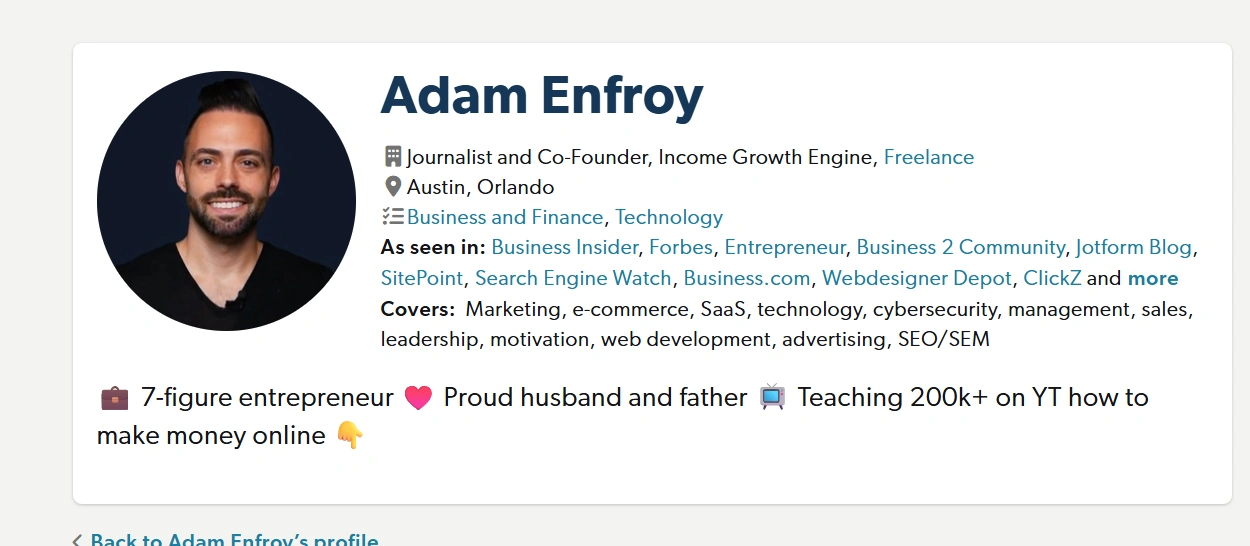
His posts aren’t just fluff or copied specs—they walk through how he uses the tool, what works, and what doesn’t. That level of insight builds credibility and gets people to click.
If you’re comfortable with slower but more consistent growth, this model can pay off well over time.
4. Influencer or Creator-Based Affiliate Marketing
This model is built around your presence. If you’ve built an audience on TikTok, Instagram, YouTube Shorts, or even Twitter, you’re already in a good spot to make it work. The key here isn’t deep technical breakdowns—it’s trust and personality.
Your followers care about what you use, wear, or recommend. So when you drop an affiliate link in a story, caption, or pinned comment, it doesn’t feel like a hard sell—it feels like a personal suggestion.
Take Jayla Koriyan, for example. She’s a beauty and lifestyle creator who uses affiliate links across her YouTube videos and Instagram posts.
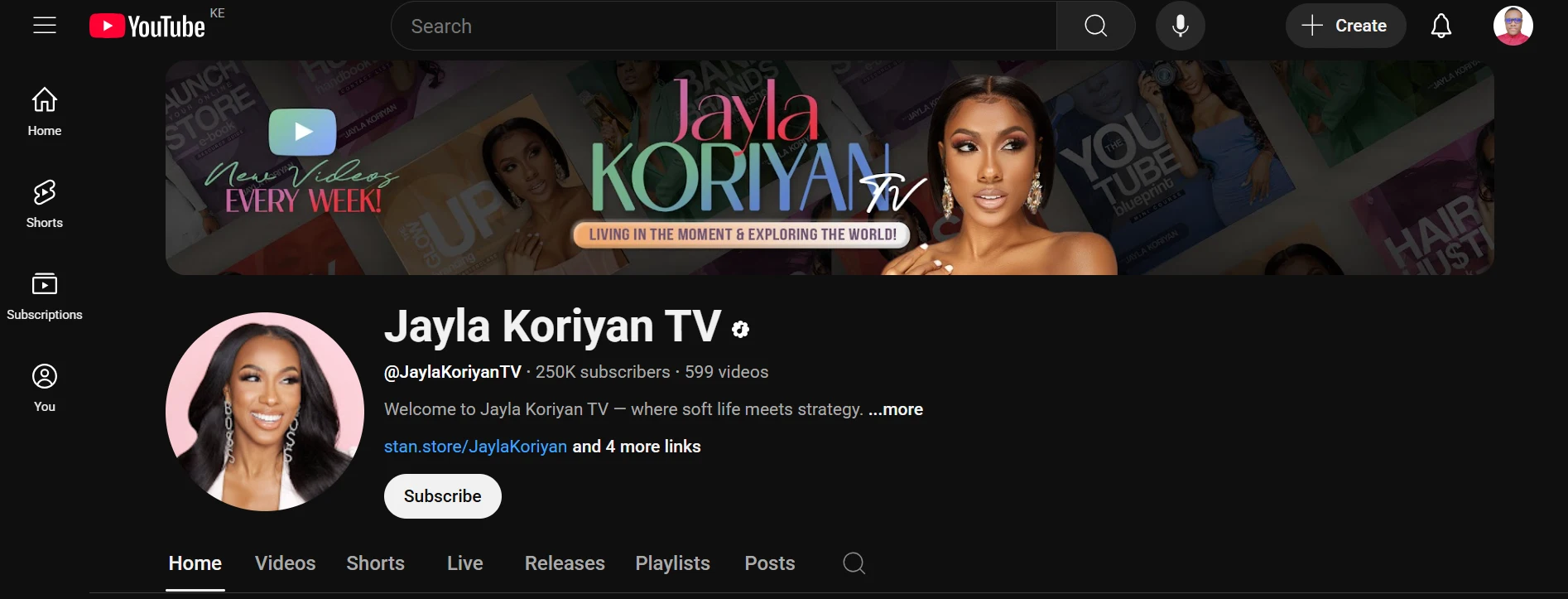
She promotes makeup, fashion, and hair products she actually uses, and her followers buy because they trust her style and reviews. It’s casual, honest, and fits right into her usual content.
This type of affiliate marketing works best when your content blends product use naturally—like tutorials, try-ons, “what I use” videos, or quick breakdowns. It’s fast-moving but can drive serious traffic and commissions when done right.
5. Coupon or Deal Site Affiliate Marketing
This model is all about speed and volume. You’re not building a brand or growing a loyal following, you’re catching people right before they buy. They’re already hunting for a discount or promo code, and your link helps them save a few bucks. In return, you earn a commission.
It’s heavy on SEO and timing. If your site ranks for terms like “XYZ coupon code” or “best deals on X product,” you’ll get traffic that converts fast. Paid ads can work too, especially if you target branded search terms, but margins can get tight if the offer isn’t strong.
You don’t need to show your face or build a personal brand. What you do need is a system for finding high-intent keywords, joining the right affiliate programs, and getting your links in front of buyers at the right moment.
A good example is RetailMeNot. It’s a massive site now, but it started by simply listing coupons and affiliate deals. When people search for a promo code before checking out, they land on pages like those, click the affiliate link, and complete their purchase.
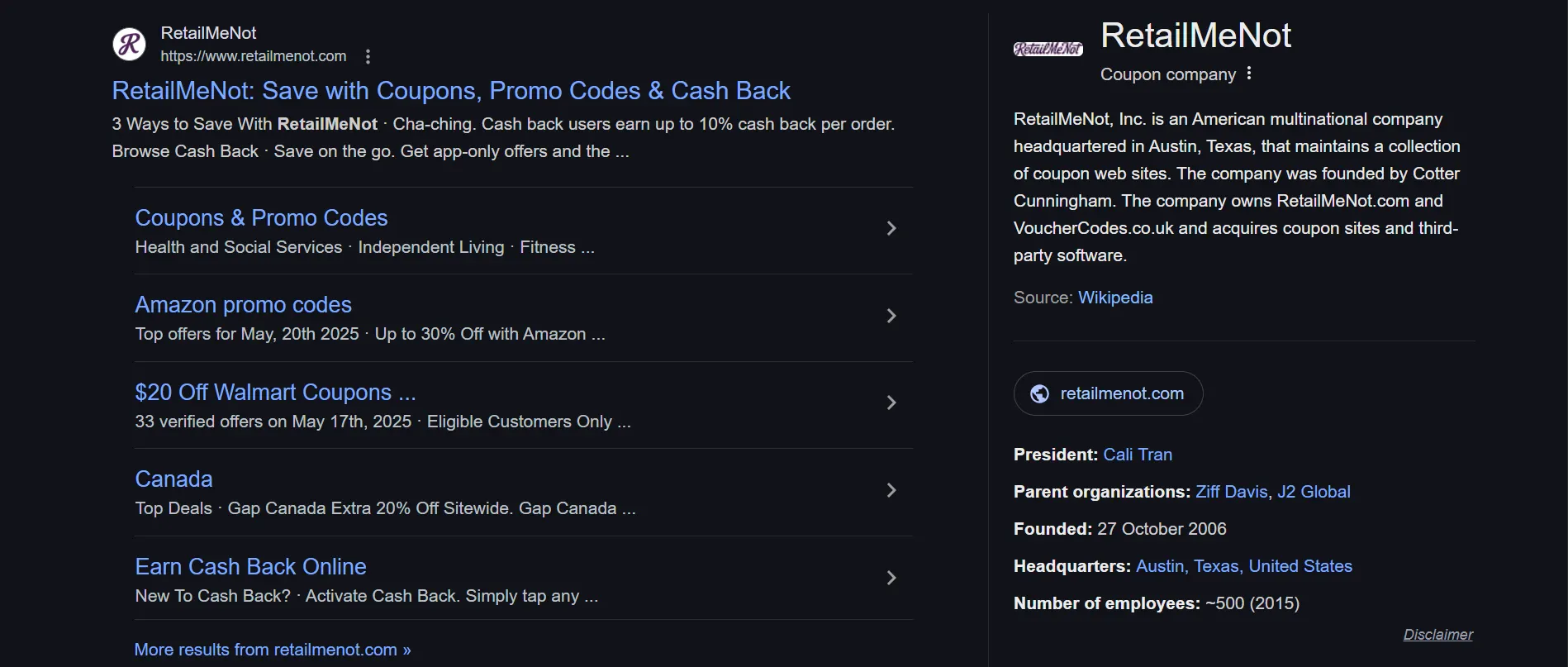
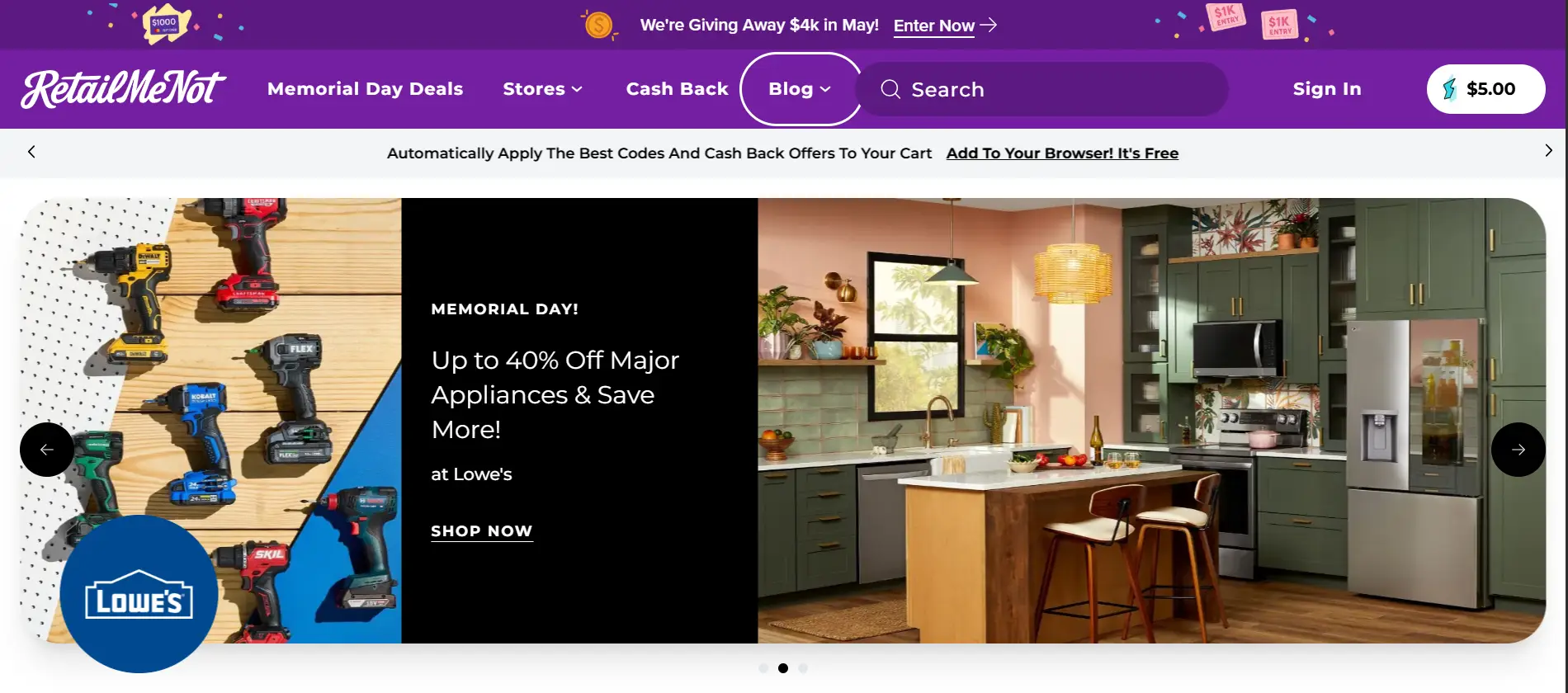
This model can work well if you know SEO or can run smart search ads—but it’s not great for building a long-term audience or deep trust. You’re a quick stop on the way to checkout, and that’s the point.
6. Review and Comparison-Based Affiliate Marketing
This one’s all about helping people decide. They’re not just browsing—they’re comparing. They’re Googling things like “best podcast mics under $100” or “ConvertKit vs Mailchimp.” That’s where this model shines.
You create content that answers those questions directly—through in-depth reviews, side-by-side comparisons, and roundup-style posts. These pieces pull in targeted traffic that’s already close to buying. They’re just looking for clarity or reassurance.
It works great with SEO. Once your post ranks, it keeps bringing in readers and potential commissions long after it’s published. But it takes work upfront—writing detailed posts, testing tools, and keeping your content updated.
A solid example is Wirecutter (owned by The New York Times). Their whole business is built on high-quality, comparison-style affiliate content.
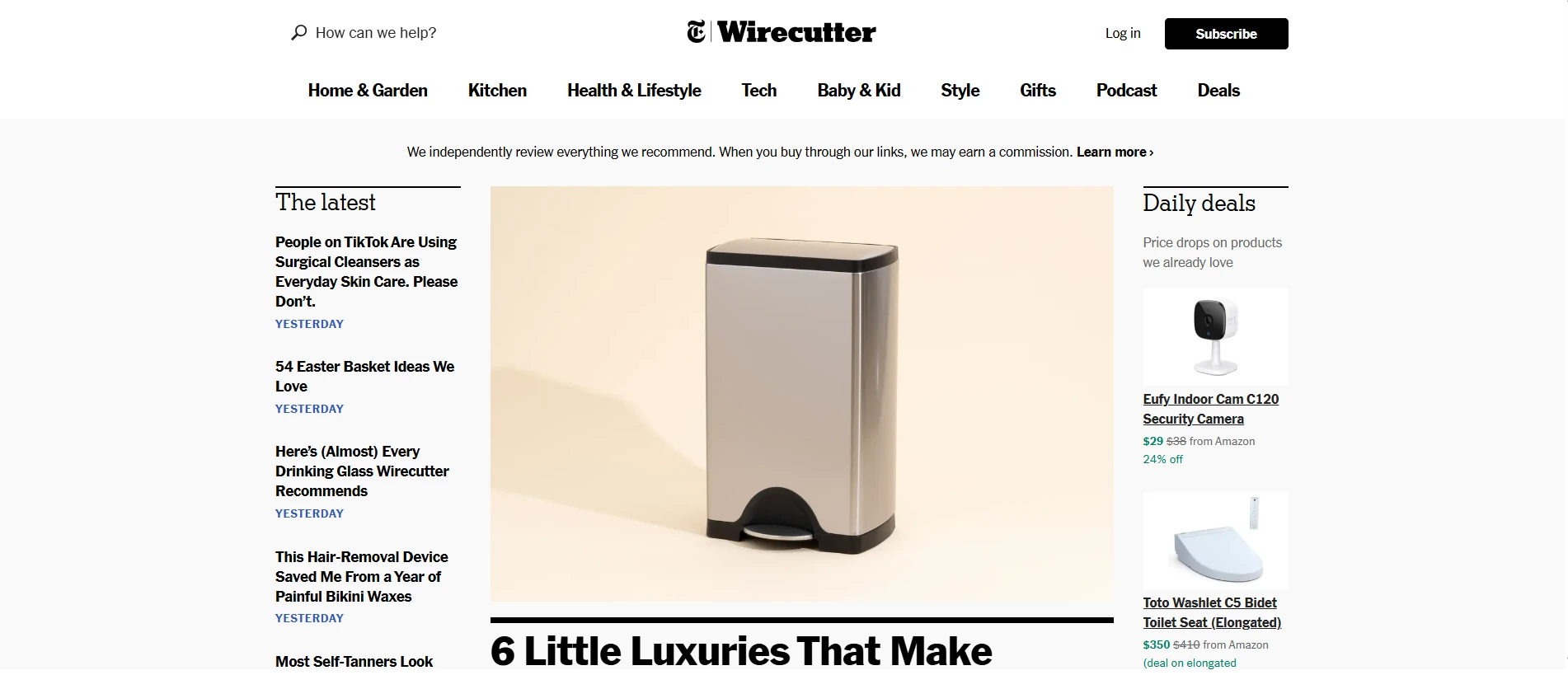
Each article dives deep into products, explains what sets them apart, and links to trusted retailers with affiliate links. People trust them because the reviews are thorough—not slapped together.
This model isn’t quick money. But if you’re patient and consistent, it builds up over time. One well-ranked post can earn for months or even years without constant updates.
7. Email and Funnel-Based Affiliate Marketing
This is the slow burn model—but once it kicks in, it runs like a machine. You build an email list, nurture your subscribers with useful content, and recommend affiliate products through targeted sequences.
It’s not about blasting links. It’s about building trust over time.
The real power here is automation. You can set up a welcome series, teach something valuable over a few days, and naturally introduce a product that helps. Once it’s built, your funnel keeps running in the background—bringing in new leads and potential commissions without daily effort.
It takes longer upfront. You need a good lead magnet, a clean opt-in flow, and emails that actually help people. But the relationship is stronger. People invited you into their inbox, and when you recommend something, it feels more personal.
An example: Matt Diggity uses this model in the SEO space. He offers lead magnets like SEO checklists, then nurtures new subscribers with a mix of tutorials and tool recommendations.
His emails often include affiliate links to SEO tools like Surfer or Ahrefs—stuff his audience genuinely needs.
If you like writing, strategy, and the idea of passive systems that build over time, this is one of the most stable affiliate models out there. It won’t pay you on day one—but it can pay you for years.
Which Type Pays Beginners Fast (and Why)?
Honestly, some affiliate models are just quicker for beginners. You don’t need to master SEO or build a funnel right away. If you’re starting from zero and want your first commission fast, skip the slow burn models (like email or review sites) and focus on speed and simplicity.
Here’s how I’d rank the 7 types, from fastest to slowest for beginners:
- Influencer/Creator-Based
- Related Affiliate Marketing
- Unattached (PPC-Based)
- Coupon/Deal Sites
- Involved Affiliate Marketing
- Review/Comparison-Based
- Email & Funnel-Based
Let me explain.
Influencer-based affiliate marketing works fast because it uses platforms with built-in traffic—TikTok, Instagram, YouTube Shorts. You don’t need a blog. You don’t need SEO. You just need to make content that clicks.
I had a student post a 30-second TikTok reviewing a free AI writing tool. She linked to a free trial with an affiliate link in her bio and made her first $87 within a few days. No website. Just smart content and a product people wanted to try.
Related affiliate marketing also pays off quickly—especially for bloggers, YouTubers, or even Twitter/X users with some niche content. You already have an audience or traffic.
You just plug in affiliate links where they make sense. It might take a few posts to see results, but it’s much faster than building from scratch.
Models like email, SEO-driven reviews, or in-depth comparisons do work—they just take time. You need content, rankings, or automation to kick in. Same with involved affiliate marketing. Those can make great long-term income, but for fast wins? Go where the eyeballs already are.
Bottom line? If you want speed, focus on platforms that give you free reach and tools that are easy to promote. You can always layer in other models later once the money starts trickling in.
How to Pick the Right Type for You
There’s no one-size-fits-all here. What works fast for one person might feel like a grind for another. So before jumping in, ask yourself a few honest questions:
✅ Quick Checklist
- Do you already have an audience (even a small one)?
- Are you willing to create content—short videos, blog posts, emails?
- Do you want fast wins or are you okay playing the long game?
- Are you comfortable being visible (face on camera), or do you prefer staying behind the scenes?
- Can you spend on ads or tools, or are you starting free?
Match Your Answers:
If you have an audience and want speed:
Go for influencer-based or related affiliate marketing. Use what you’ve already built. Think short-form content, product mentions, quick wins.
If you’re starting with no audience but can spend on ads:
Unattached affiliate marketing might work—but only if you understand paid traffic. Otherwise, it’s a money pit.
If you’re behind-the-scenes and good with SEO or research:
Try review or comparison-based content. It’s slower, but once it ranks, it pays consistently.
If you like writing and building trust:
Email/funnel-based marketing and involved affiliate marketing fit. You’ll grow slowly, but your audience will buy from you over and over.
If you want volume over brand-building:
Coupon/deal marketing is pure traffic and conversions. No need to show your face. Just find the right offers and ranking angles.
Pick a model that fits how you work—not just what looks trendy. That’s how you stay consistent long enough to see results.
Final Thoughts and What to Do Next
If you’re just getting into affiliate marketing, influencer-based and related affiliate marketing give you the fastest shot at earning. They’re simple to start, don’t need a website, and plug into platforms people already scroll through every day.
But don’t try to mix all seven models. That’s how most beginners burn out. Pick one. Focus. Learn the ropes. Then expand.
Here’s your move:
- Choose one type that fits you
- Find a product or offer that solves a real problem
- Create and post something in the next 48 hours
You don’t need to be perfect. You just need to move. Most people stay stuck planning.
Want help? I’ve got a free [Affiliate Starter Checklist] that breaks down the exact steps to go from zero to first commission. It includes offer ideas, traffic tips, and a simple launch plan you can follow today.
Or if you’re ready to go deeper, check out my full Affiliate Kickstart Course. It’s built for beginners who want real results—without the fluff.
Whichever path you pick, just start. You’ll learn faster by doing than by reading 100 more articles.
Frequently Asked Questions
What is the easiest type of affiliate marketing for beginners?
For most beginners, influencer-based or related affiliate marketing is the easiest way to start. You don’t need a website, email list, or deep tech skills. All you need is a basic understanding of your niche and the ability to create simple content. Platforms like TikTok, Instagram Reels, or YouTube Shorts give you reach without paying for ads. You can talk about a product, share your experience, and drop an affiliate link in your bio. If you already post content—even casually—you’re halfway there. One of my students made her first commission from a 30-second TikTok review. It’s that simple when the traffic is already baked in.
Which affiliate model pays the fastest?
The fastest-paying affiliate models usually fall into two buckets: short-form content marketing and coupon/deal affiliate marketing. Short-form video gets quick traction because of how platforms like TikTok and YouTube Shorts distribute content to new audiences. It doesn’t matter how many followers you have—you can go viral with one video. On the other hand, coupon and deal sites tap into buyers who are already ready to purchase. Think last-minute shoppers hunting for discounts. You don’t need to build a brand. Just find trending offers, drive urgency, and publish on the right site. Both models cut down the time it takes to get that first commission.
Do I need a website for all types of affiliate marketing?
No. You can succeed in affiliate marketing without a website. Many beginner-friendly models like influencer-based marketing, coupon promotions, and even some PPC approaches work directly on platforms like TikTok, Instagram, or paid ad networks. You just need a solid traffic source and a clear call to action. That said, having a website can help with long-term trust and flexibility. But early on, if you’re testing fast methods or want to skip technical setup, focus on platforms where your content gets visibility without needing SEO or hosting. I always say: start where you are. Add a website when it actually supports your growth.
What type of affiliate marketing is best for long-term income?
If you’re thinking long-term, you want models that build trust, assets, and automation. That’s where involved affiliate marketing and email/funnel-based marketing shine. These take more time upfront, but they create systems that pay over and over again. When you actually use a product, create deep content around it, and build a list of people who trust you, your conversion rate skyrockets. Email sequences, review blogs, and evergreen tutorials continue working even when you’re offline. It’s slower at first, but it’s more stable. I’ve had funnel setups that keep bringing in commissions a year after launch—with no updates. That’s the long play.
Can I mix different types of affiliate marketing?
You can, but timing matters. I always suggest starting with one model and sticking to it until you’ve made real progress—either a few commissions or consistent traffic. Mixing too early spreads your energy thin. You’ll feel busy, but not productive. Once you’ve learned the ropes and built a small system that works—like short-form content that drives clicks or a blog that ranks—you can layer on another model. For example, I started with YouTube and added email funnels later. That worked because I wasn’t trying to juggle everything on day one. Start simple. Stack skills once you have a rhythm.






